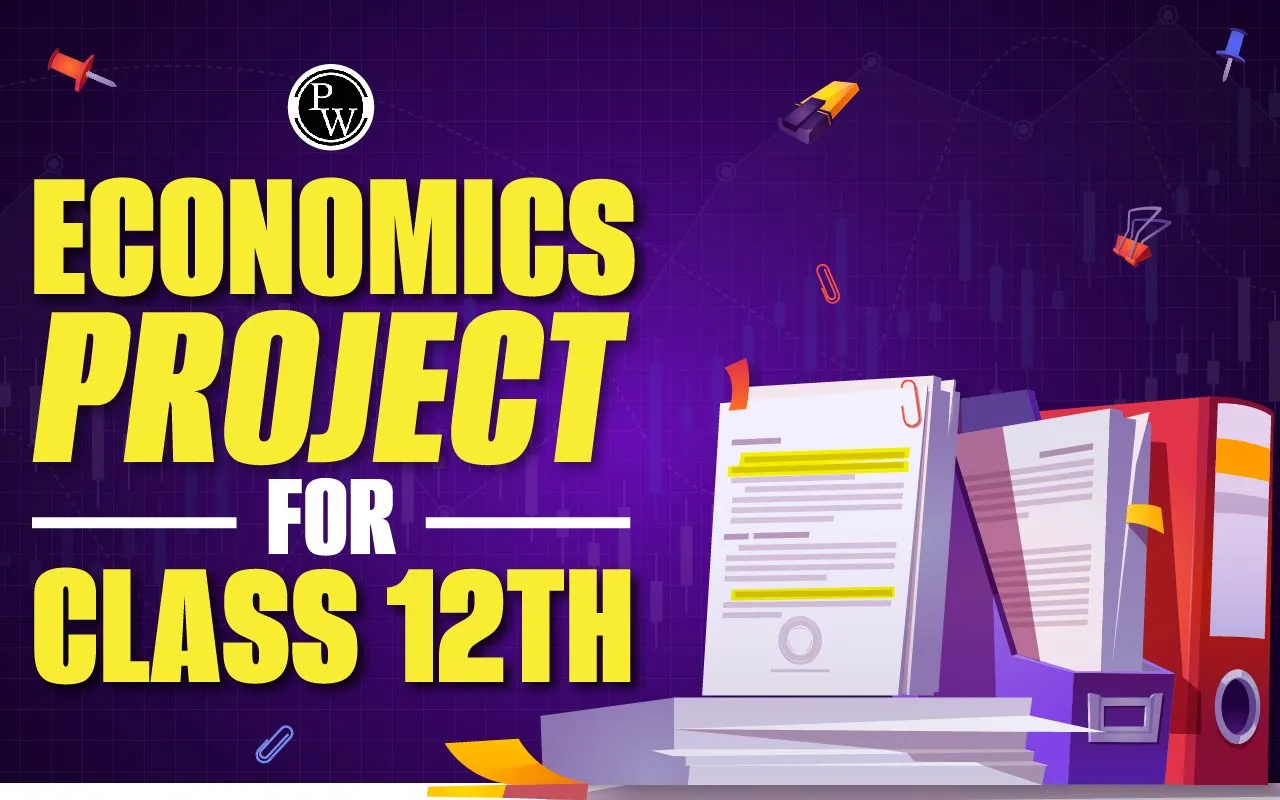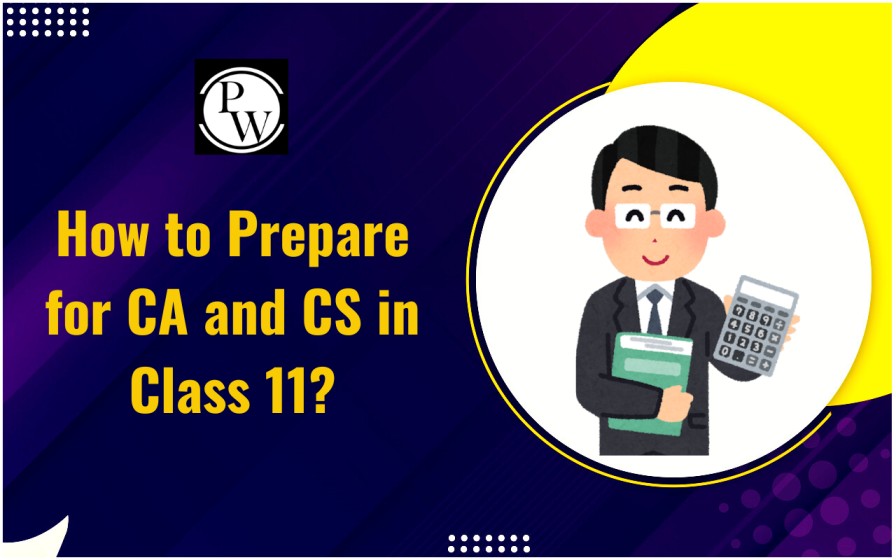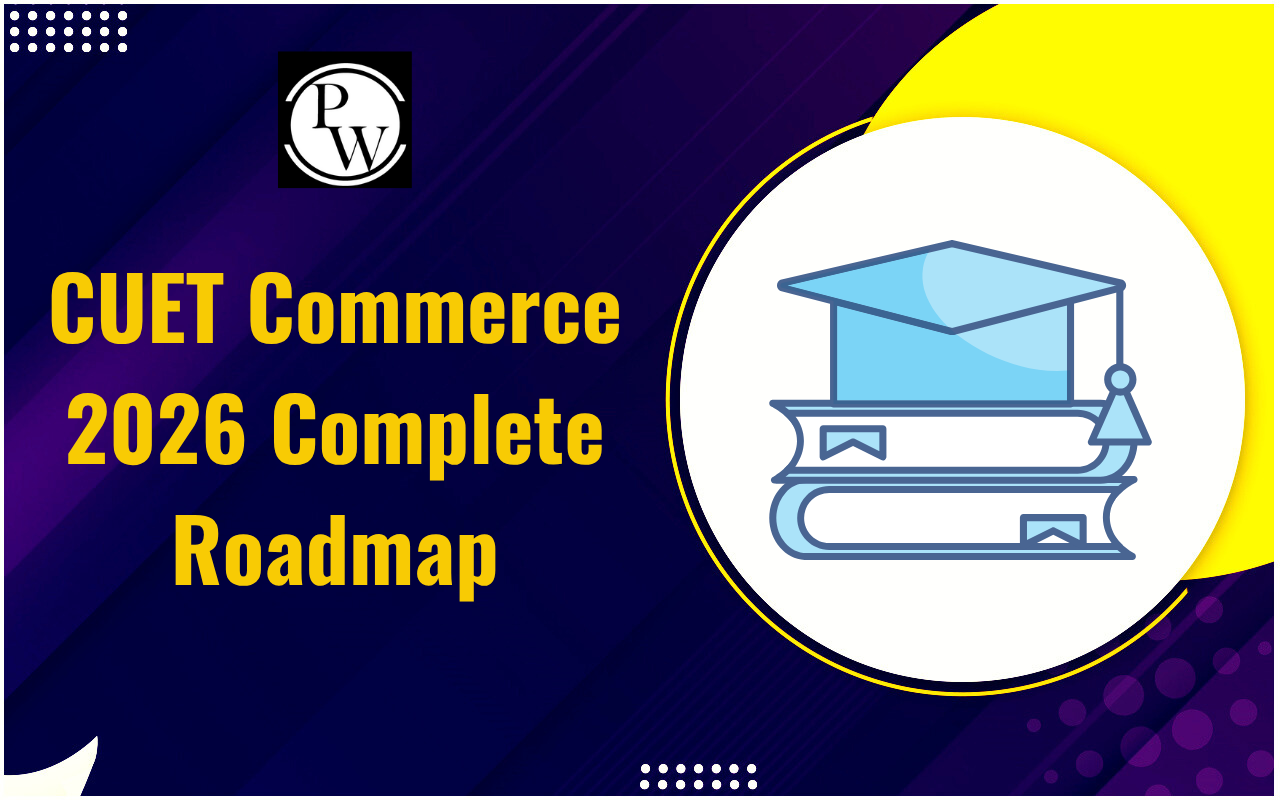

Economics Project is a vital part of Social Sciences, significantly shapes our society. As a dynamic field, it necessitates a profound exploration of current economic patterns influencing a country's financial stability. In senior secondary education, fundamental concepts are covered, providing a solid foundation for advanced studies.
Class 12 Economics involves both theoretical learning and practical understanding through project work, which is a crucial component of the syllabus. To gain a holistic perspective, students delve into case studies and analyze real-time economic trends across various nations. Check the following article If you're seeking an idea for a class 12 Economics project.Important Topics of Economics Project
The main goal of your project is to help you observe and understand economics better. In senior secondary education, you'll grasp abstract ideas, enhance critical thinking skills, and develop your unique perspective. This stage exposes you systematically to the rigorous aspects of the subject. The class 12 Economics project aims to delve deeper into applying economic concepts, emphasizing the role of Economics in nation-building and addressing field-related challenges. Economics covers a broad spectrum, including GDP, taxation, import/export, and budget. Choosing a topic for your class 12 Economics project might seem daunting. Here are some excellent options:- Banking Sector Reforms
- Tax Reforms
- Digital India Movement
- Import Substitution vs Export Promotion
- Impact of Macroeconomic Variables on Currency Values
- Price Determination
- Opportunity Cost
- Demand and its Determinants
- Production – Returns to a Factor
- Monopoly, Monopolistic Competition
- Supply and its Determinants
- Demonetization in India
- Price Discrimination
- Budget Deficit
- Cost Function and Cost Curve
- Credit Creation
- Balance of Payment
- Production Possibility Curve
- The Central Bank and its Functions
List of Additional Topics for Economics Project, Class 12 CBSE 2025-26
In addition to the earlier mentioned topics, consider these ideas for your Class 12 Economics Project:- Principles of Management
- Foreign Exchange Market
- Exchange Rate System
- Development of the Indian Economy
- Money Multiplier
- Government Budgets and its Components
- Basic Principles of Taxation
- Price Determination
- Evolution of the Barter System
- Cashless Economy
Economics Project Complete Overview
Here, we've provided detailed explanations of the top 10 topics mentioned above.1. Banking Sector Reforms
Exploring the banking sector reforms involves a detailed analysis of the changes that transformed the financial landscape. The shift in India's economic policy towards liberalization marked a turning point. Before delving into the reforms, it's crucial to briefly outline the factors prompting these changes. The key points to discuss include:Reduction of Statutory Liquidity Rate (SLR) and Cash Reserve Ratio (CRR): Explain how these adjustments aimed to influence banks' lending capacity and economic liquidity.
Deregulation of interest rates: Discuss how lifting restrictions on interest rates affected borrowing, lending, and overall economic dynamics.
Allowing foreign banks to open branches in India (in line with liberalization): Explore the impact of this move on competition, financial services, and the integration of global banking practices.
Transformation of RBI's role from regulator to facilitator: Examine how the reforms shifted the Reserve Bank of India's function, emphasizing its facilitative role in fostering a more dynamic banking environment.
2. Tax Reforms
In a Tax reform project, we need to cover three crucial aspects. Firstly, understanding what tax reforms entail. Secondly, exploring why there was a necessity for these reforms in India. Thirdly, delving into the specific reforms implemented, and lastly, assessing the impact of these reforms on the economy, considering whether the outcomes align with the government's objectives. Key topics for the project include:India’s Fiscal Policy: Explain the country's approach to managing revenue and expenses, which forms the basis for tax-related decisions.
Types of Taxes (Indirect and Direct Taxes): Differentiate between indirect and direct taxes, illustrating their respective impacts on individuals and the broader economy.
Change in Tax Rates: Explore how alterations in tax rates influence the behaviour of businesses and individuals, impacting economic activities.
Simplification of the Fiscal System: Discuss efforts to streamline and simplify the tax system, making it more accessible and efficient.
Tax Evasion: Analyze measures taken to curb tax evasion, emphasizing their role in ensuring a fair and effective tax system.
3. Digital India Movement
In examining the Digital India Movement, we must trace its evolution, understand its origins, underlying motivations, and impact, and share personal reflections on the initiative. Several key topics should be addressed in the project:Awareness of the Digital India Project: Discuss the genesis of the Digital India project, how it was introduced, and the goals it aimed to achieve.
Adoption of the Digital India Policy in Rural Areas: Explore how people from rural areas embraced the Digital India policy, highlighting the challenges and successes in spreading digital awareness.
Effectiveness of Digitalization: Evaluate the overall effectiveness of digitalization in various sectors, considering improvements in efficiency, accessibility, and services.
Digital India and Foreign Trade: Examine the role of the Digital India Movement in shaping and enhancing India's participation in foreign trade through digital means.
Overall Impact of the Digital India Movement: Summarize the broader consequences of the movement on the socio-economic landscape, including changes in education, governance, and everyday life.
Lastly, express your personal perspective on the Digital India Movement, considering its significance, achievements, and any areas for potential improvement. This will provide a well-rounded exploration of the initiative.4. Import Substitution vs Export Promotion
In detailing trade policy reforms for your project, it's important to delve into both import substitution and export promotion, highlighting their distinctions. The project structure can be as follows:Phases of Export Promotion: Discuss the different stages and strategies involved in the Export Promotion policy, emphasizing its evolution.
Export Promotion Council of India: Explore the role and functions of the Export Promotion Council of India in facilitating and promoting exports.
Objectives Behind Export Promotion: Outline the goals and aspirations driving the Export Promotion policy, focusing on economic growth and global market presence.
Export Promotion Policies: Examine specific policies implemented to boost exports, including incentives, subsidies, and trade agreements.
History of Import Substitution: Provide a historical context for Import Substitution, detailing its origins and evolution over time.
Objectives Behind Import Substitution: Discuss the underlying objectives of Import Substitution, emphasizing self-sufficiency and domestic industry development.
Measures for Import Substitution: Explore the various measures taken to implement Import Substitution, such as protective tariffs and trade barriers.
5. Impact of Macroeconomic Variables on Values of Currencies
In exploring how economic variables influence currency values or exchange rates for your project, let's delve into the impact of key factors in straightforward terms:Inflation Rate: Discuss how the inflation rate affects currency value, explaining the concept that lower inflation tends to appreciate a currency while higher inflation may lead to depreciation.
Balance of Payment: Examine the relationship between a country's balance of payments and its currency value, highlighting how trade surpluses or deficits influence exchange rates.
Tax Rate: Explore the impact of tax rates on currency values, considering how changes in tax policies can affect investor confidence and currency strength.
Import and Export Value: Discuss how the value of a country's imports and exports can impact its currency, emphasizing the role of trade balances in currency valuation.
Monetary Policy: Explain how monetary policy decisions, such as interest rate changes and money supply adjustments, influence currency values and exchange rates.
6. Price Determination
In dissecting how prices are determined across various market structures for your project, let's break down the key topics in a simple manner:Types of Market: Introduce the different forms of markets, such as perfect competition, monopoly, monopolistic competition, and oligopoly.
Perfect Competition and Price Determination: Explore the characteristics of perfect competition and how prices are determined in this market structure, considering factors like supply and demand equilibrium.
Monopoly Market and Price Determination: Examine the unique features of a monopoly market and delve into how a sole producer influences price based on its control over the entire market.
Monopolistic Market and Price Determination: Discuss the characteristics of a monopolistic market, emphasizing how firms differentiate their products and set prices.
Oligopoly and Price Determination: Explore the dynamics of oligopoly, where a few large firms dominate the market, and analyze how their interdependence influences pricing strategies.
7. Opportunity Cost
In crafting a project on opportunity cost, let's explore the key topics:What is the Opportunity Cost: Define opportunity cost as the value of the next best alternative forgone when a decision is made.
Opportunity Cost Graph: Illustrate the concept with a graph, showcasing how the opportunity cost relates to decision-making points.
Examples of Opportunity Cost: Provide real-life examples to help grasp the concept, highlighting scenarios where choosing one option involves sacrificing another.
How to Calculate Opportunity Cost: Explain the method for calculating opportunity cost, emphasizing the importance of considering both explicit and implicit costs.
Applications of Opportunity Cost: Explore various applications, such as determining factor prices, economic rent, consumption patterns, product plans, and national priorities.
Types of Opportunity Cost: Differentiate between explicit cost, implicit cost, and marginal opportunity cost, explaining their roles in decision-making.
8. Demand and its Determinants
In creating a project on demand and its determinants, let's explore the key topics:What is Demand: Define demand as the quantity of a good or service that consumers are willing and able to buy at various prices during a given period.
Demand Curve and Schedule: Introduce the demand curve and schedule, illustrating the relationship between price and quantity demanded.
Law of Demand: Explain the law of demand, stating that, all else being equal, as the price of a good or service decreases, the quantity demanded increases, and vice versa.
Exceptions of the Law of Demand: Highlight exceptions or situations where the law of demand may not hold true, providing insights into factors that can influence demand differently.
Introduction to Determinants of Demand: Introduce the determinants of demand, emphasizing the external factors that influence consumers' willingness and ability to purchase.
Different Determinants of Demand: Explore key determinants such as the price of the product, income of the consumer, taste and preferences, and prices of related goods, explaining how each affects the demand for a commodity.
9. Production – Returns to a Factor
In crafting a project on returns to factor, let's break down the key topics in simple terms:Factors of Production: Define factors of production as the resources, including land, labour, and capital, used to create goods and services.
Variable Factors: Explain variable factors as inputs that can be adjusted in the short term, such as labour or raw materials.
Fixed Factors: Define fixed factors as inputs that remain constant in the short term, like machinery or facilities.
Diminishing Returns to Scale: Discuss the concept of diminishing returns to scale, where increasing all inputs proportionally leads to a less-than-proportionate increase in output.
Total/Average/Marginal Productivity: Explore the different aspects of productivity—total, average, and marginal—highlighting how changes in input affect overall output.
10. Monopoly
Creating a project on the monopoly market involves covering several key topics:What is a Monopoly Market and its Features: Define a monopoly market as a situation where a single seller dominates the entire industry and highlights its distinctive features.
Reasons for the Emergence of Monopoly: Explore the factors that lead to the emergence of a monopoly, such as control over essential resources or technological superiority.
Types of Monopoly: Discuss different types of monopoly, including natural monopoly, geographic monopoly, and technological monopoly, explaining their unique characteristics.
Can a Monopoly Market be Harmful to the Economy: Evaluate the potential negative impacts of a monopoly market on the economy, considering issues like limited consumer choice and potential abuse of market power.
Market Structures Related to a Monopoly Market: Compare a monopoly with other market structures like perfect competition and oligopoly, highlighting the differences in terms of competition and market dynamics.
Therefore, this Class 12 Economics project has delved into diverse economic realms, from banking reforms to market structures, offering a comprehensive understanding of vital concepts. It emphasizes the interplay of economic factors, providing valuable insights into decision-making processes and their real-world implications. As a key takeaway, the project reinforces the importance of informed economic knowledge for navigating the complexities of the financial world.Furthermore, PW (PhysicsWallah) stands out as an exceptional coaching platform for Commerce students, demonstrating a commitment to quality education and serving as a reliable ally in the pursuit of academic excellence. Level up your Commerce expertise with PW Commerce Online Course – Join now for a transformative learning experience!
Economics Project FAQs
What is the topic of the Class 12 Economics Project?
Which topic is best for Economics Project Class 12?
What is the project of Class 12 Economics?
Why did I choose this topic for my Class 12 project?
How do I make a Class 12 project?













